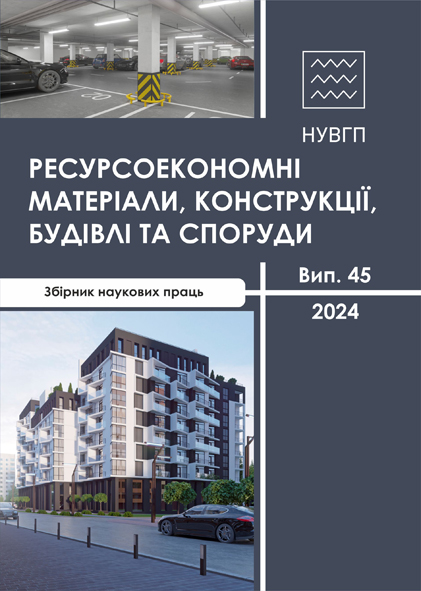CALCULATION OF REINFORCED CONCRETE CROSS-BEAM SYSTEMS
DOI:
https://doi.org/10.31713/budres.v0i45.25Abstract
It is shown that traditionally the influence of cracks is taken into account only when bending rigidities change, and torsional rigidities are not changed. This leads to errors in determining efforts.
A comparison was made of experimental data for a reinforced concrete cross-beam system measuring 2x2 meters in plan. In the process of iterative calculations, if a crack appeared in the section, then the stiffness of the section decreased and did not increase in the future. The hypothesis is accepted that after the formation of cracks, both torsional and flexural stiffness change according to the same linear law.
Comparison of experimental data with theoretical data was carried out in two versions. The first option is when only the change in bending stiffness due to the formation of cracks was taken into account. The second option is when both the bending and torsional stiffness of the system elements changed due to the formation of cracks.
Taking into account changes in torsional stiffness increases accuracy. As a result of the comparison, it was found that the average error values decreased from 1.24 to 1.089.
A system with a plan size of 4x4 m with a beam spacing of 1 m, which is similar in the arrangement of beams, was also considered. In this scheme, the bending moments do not change significantly (from 0.83 to 1.077 times). And the torques change very noticeably (from 0.87 to 2.71 times). Moreover, the torques in the secondary beams when changes in torsional stiffness are not taken into account are always significantly greater than when such a change is taken into account.
Thus, comparison with experimental data of theoretical calculations of a cross-beam system proves the statement that when designing, it is necessary to take into account the change in torsional stiffness due to the formation of cracks. In this case, the system can either reduce or increase the required transverse reinforcement with closed clamps. It all depends on the ratio of beam stiffnesses, load level, load application pattern, etc.

